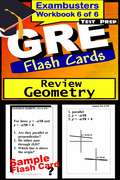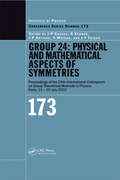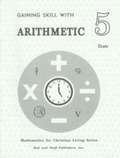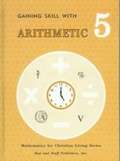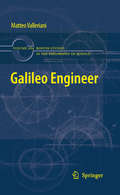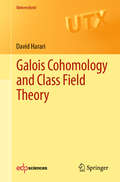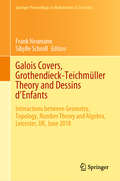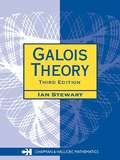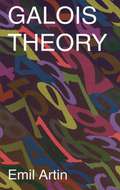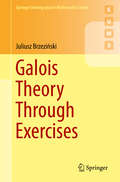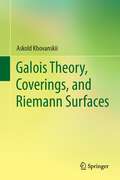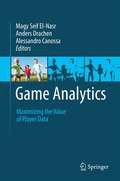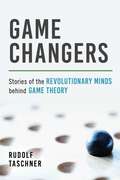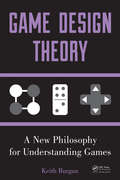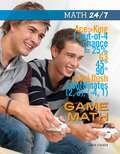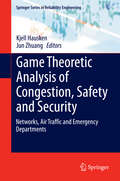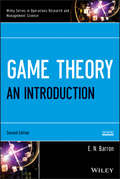- Table View
- List View
GRE Test Prep Flash Cards: Algebra (Exambusters GRE Workbook #5 of 6)
by Ace Inc.<P><P><i>Advisory: Bookshare has learned that this book offers only partial accessibility. We have kept it in the collection because it is useful for some of our members. Benetech is actively working on projects to improve accessibility issues such as these.</i><P><P> 450 questions and answers that highlight introductory algebra definitions, problems, and concepts. <P><P>Topics: Algebraic Concepts, Sets, Variables, Exponents, Properties of Numbers, Simple Equations, Signed Numbers, Monomials, Polynomials, Additive and Multiplicative Inverse, Word Problems, Prime Numbers, Factoring, Algebraic Fractions, Ratio and Proportion, Variation, Radicals, Quadratic Equations <P> EXAMBUSTERS GRE Prep Workbooks provide comprehensive, fundamental GRE review--one fact at a time--to prepare students to take practice GRE tests. Each GRE study guide focuses on one specific subject area covered on the GRE exam. From 300 to 600 questions and answers, each volume in the GRE series is a quick and easy, focused read. Reviewing GRE flash cards is the first step toward more confident GRE preparation and ultimately, higher GRE exam scores!
GRE Test Prep Flash Cards: Geometry (Exambusters GRE Workbook #6 of 6)
by Ace Inc.<P><P><i>Advisory: Bookshare has learned that this book offers only partial accessibility. We have kept it in the collection because it is useful for some of our members. Benetech is actively working on projects to improve accessibility issues such as these.</i><P><P> 450 questions and answers that focus on essential geometry theorems, postulates, concepts, and definitions. Includes complementary diagrams. <P><P>Topics: Lines and Angles, Triangles, Proofs, Perpendicular Lines, Parallel Lines, Angle Sums, Quadrilaterals, Medians, Altitudes and Bisectors, Circles, Ratio and Proportion, Similar Polygons, Circles and Regular Polygons, Inequalities, Locus, Coordinate Geometry <P>EXAMBUSTERS GRE Prep Workbooks provide comprehensive, fundamental GRE review--one fact at a time--to prepare students to take practice GRE tests. Each GRE study guide focuses on one specific subject area covered on the GRE exam. From 300 to 600 questions and answers, each volume in the GRE series is a quick and easy, focused read. Reviewing GRE flash cards is the first step toward more confident GRE preparation and ultimately, higher GRE exam scores!
GROUP 24: Physical and Mathematical Aspects of Symmetries: Proceedings of the 24th International Colloquium on Group Theoretical Methods in Physics, Paris, 15-20 July 2002
by J-P Antoine J-P Gazeau R Kerner S Métens J-Y ThibonAs a record of an international meeting devoted to the physical and mathematical aspects of group theory, GROUP 24: Physical and Mathematical Aspects of Symmetries provides an important selection of informative articles describing recent advances in the field. The applications of group theory presented in this book deal not only with the traditional fields of physics, but also include such disciplines as chemistry and biology. Plenary session contributions are represented by 18 longer articles, followed by nearly 200 shorter articles. The book also presents coherent states, wavelets, and applications and quantum group theory and integrable systems in two separate sections.
GROWING POPULATIONS, CHANGING LANDSCAPES: Studies from India, China, and the United States
by Indian National Science AcademyAs the world’s population exceeds an incredible 6 billion people, governments—and scientists—everywhere are concerned about the prospects for sustainable development. The science academies of the three most populous countries have joined forces in an unprecedented effort to understand the linkage between population growth and land-use change, and its implications for the future. By examining six sites ranging from agricultural to intensely urban to areas in transition, the multinational study panel asks how population growth and consumption directly cause land-use change, and explore the general nature of the forces driving the transformations. Growing Populations, Changing Landscapes explains how disparate government policies with unintended consequences and globalization effects that link local land-use changes to consumption patterns and labor policies in distant countries can be far more influential than simple numerical population increases. Recognizing the importance of these linkages can be a significant step toward more effective environmental management.
Gaining Skill With Arithmetic: Grade 5 Test Booklet
by Sandra BaumanTest booklet for Grade 5 math. Included in the Mathematics for Christian Living Series.
Gaining Skill with Arithmetic Grade 5 (Mathematics for Christian Living Series)
by Sandra BaumanThis textbook has 170 lessons, counting tests. Lesson concepts are explained in the student text. This book reviews and extends concepts taught in the previous grades. Reading problems are exercised regularly. Covers place value, decimals, factoring and prime numbers, metric system, fractions, ratio and proportion, geometry, percents, and graphs.
Galilean Mechanics and Thermodynamics of Continua
by Géry De SaxcéThis title proposes a unified approach to continuum mechanics which is consistent with Galilean relativity. Based on the notion of affine tensors, a simple generalization of the classical tensors, this approach allows gathering the usual mechanical entities -- mass, energy, force, moment, stresses, linear and angular momentum -- in a single tensor. Starting with the basic subjects, and continuing through to the most advanced topics, the authors' presentation is progressive, inductive and bottom-up. They begin with the concept of an affine tensor, a natural extension of the classical tensors. The simplest types of affine tensors are the points of an affine space and the affine functions on this space, but there are more complex ones which are relevant for mechanics -- torsors and momenta. The essential point is to derive the balance equations of a continuum from a unique principle which claims that these tensors are affine-divergence free.
Galileo Engineer
by Matteo VallerianiThis work systematically investigates and reconstructs the practical knowledge Galileo shared during his lifetime. Galileo shared many aspects of practical knowledge. These included the methods and experience of foremen and engineers active within various frameworks. Galileo did not always react to such scientific impulses in the same way. On the one hand, he not only shared practical knowledge, but also acted as an engineer, especially within the framework of the art of war at the end of the sixteenth century, and more so during the time he spent in Padua. On the other hand, his scientific achievements were largely based on and influenced by aspects of practical knowledge coming from particular disciplines and activities, without him ever becoming an expert in these disciplines. Two case studies, the first concerned with Galileo's theory of the strength of materials and the second with his achievement of an atomistic heat doctrine, enable a focus on the early modern model of generation of new scientific knowledge based on the conflicting interaction between aspects of practical knowledge and Aristotelian theoretical assumptions.
Galois Cohomology and Class Field Theory (Universitext)
by David HarariThis graduate textbook offers an introduction to modern methods in number theory. It gives a complete account of the main results of class field theory as well as the Poitou-Tate duality theorems, considered crowning achievements of modern number theory.Assuming a first graduate course in algebra and number theory, the book begins with an introduction to group and Galois cohomology. Local fields and local class field theory, including Lubin-Tate formal group laws, are covered next, followed by global class field theory and the description of abelian extensions of global fields. The final part of the book gives an accessible yet complete exposition of the Poitou-Tate duality theorems. Two appendices cover the necessary background in homological algebra and the analytic theory of Dirichlet L-series, including the Čebotarev density theorem. Based on several advanced courses given by the author, this textbook has been written for graduate students. Including complete proofs and numerous exercises, the book will also appeal to more experienced mathematicians, either as a text to learn the subject or as a reference.
Galois Covers, Grothendieck-Teichmüller Theory and Dessins d'Enfants: Interactions between Geometry, Topology, Number Theory and Algebra, Leicester, UK, June 2018 (Springer Proceedings in Mathematics & Statistics #330)
by Frank Neumann Sibylle SchrollThis book presents original peer-reviewed contributions from the London Mathematical Society (LMS) Midlands Regional Meeting and Workshop on 'Galois Covers, Grothendieck-Teichmüller Theory and Dessinsd'Enfants', which took place at the University of Leicester, UK, from 4 to 7 June, 2018. Within the theme of the workshop, the collected articles cover a broad range of topics and explore exciting new links between algebraic geometry, representation theory, group theory, number theory and algebraic topology. The book combines research and overview articles by prominent international researchers and provides a valuable resource for researchers and students alike.
Galois Groups and Fundamental Groups
by Tamás SzamuelyEver since the concepts of Galois groups in algebra and fundamental groups in topology emerged during the nineteenth century, mathematicians have known of the strong analogies between the two concepts. This book presents the connection starting at an elementary level, showing how the judicious use of algebraic geometry gives access to the powerful interplay between algebra and topology that underpins much modern research in geometry and number theory. Assuming as little technical background as possible, the book starts with basic algebraic and topological concepts, but already presented from the modern viewpoint advocated by Grothendieck. This enables a systematic yet accessible development of the theories of fundamental groups of algebraic curves, fundamental groups of schemes, and Tannakian fundamental groups. The connection between fundamental groups and linear differential equations is also developed at increasing levels of generality. Key applications and recent results, for example on the inverse Galois problem, are given throughout.
Galois Representations and (φ, Γ)-Modules
by Peter SchneiderUnderstanding Galois representations is one of the central goals of number theory. Around 1990, Fontaine devised a strategy to compare such p-adic Galois representations to seemingly much simpler objects of (semi)linear algebra, the so-called etale (phi, gamma)-modules. This book is the first to provide a detailed and self-contained introduction to this theory. The close connection between the absolute Galois groups of local number fields and local function fields in positive characteristic is established using the recent theory of perfectoid fields and the tilting correspondence. The author works in the general framework of Lubin–Tate extensions of local number fields, and provides an introduction to Lubin–Tate formal groups and to the formalism of ramified Witt vectors. This book will allow graduate students to acquire the necessary basis for solving a research problem in this area, while also offering researchers many of the basic results in one convenient location.
Galois Theory
by Ian StewartGalois theory is a fascinating mixture of classical and modern mathematics, and in fact provided much of the seed from which abstract algebra has grown. It is a showpiece of mathematical unification and of "technology transfer" to a range of modern applications.Galois Theory, Second Edition is a revision of a well-established and popular te
Galois Theory
by Ian StewartSince 1973, Galois theory has been educating undergraduate students on Galois groups and classical Galois theory. In Galois Theory, Fifth Edition, mathematician and popular science author Ian Stewart updates this well-established textbook for today’s algebra students. New to the Fifth Edition Reorganised and revised Chapters 7 and 13 New exercises and examples Expanded, updated references Further historical material on figures besides Galois: Omar Khayyam, Vandermonde, Ruffini, and Abel A new final chapter discussing other directions in which Galois theory has developed: the inverse Galois problem, differential Galois theory, and a (very) brief introduction to p-adic Galois representations This bestseller continues to deliver a rigorous, yet engaging, treatment of the subject while keeping pace with current educational requirements. More than 200 exercises and a wealth of historical notes augment the proofs, formulas, and theorems.
Galois Theory (Dover Books on Mathematics)
by Arthur N. Milgram Emil ArtinIn the nineteenth century, French mathematician Evariste Galois developed the Galois theory of groups-one of the most penetrating concepts in modem mathematics. The elements of the theory are clearly presented in this second, revised edition of a volume of lectures delivered by noted mathematician Emil Artin. The book has been edited by Dr. Arthur N. Milgram, who has also supplemented the work with a Section on Applications.The first section deals with linear algebra, including fields, vector spaces, homogeneous linear equations, determinants, and other topics. A second section considers extension fields, polynomials, algebraic elements, splitting fields, group characters, normal extensions, roots of unity, Noether equations, Jummer's fields, and more.Dr. Milgram's section on applications discusses solvable groups, permutation groups, solution of equations by radicals, and other concepts.
Galois Theory Through Exercises (Springer Undergraduate Mathematics Series)
by Juliusz BrzezińskiProvides a hands-on approach to learning Galois theory, focusing on problem-solving exercises.<P><P> Features almost 500 exercises with hints, answers or solutions.<P> Includes Maple tutorials and exercises.<P> This textbook offers a unique introduction to classical Galois theory through many concrete examples and exercises of varying difficulty (including computer-assisted exercises).<P> In addition to covering standard material, the book explores topics related to classical problems such as Galois’ theorem on solvable groups of polynomial equations of prime degrees, Nagell's proof of non-solvability by radicals of quintic equations, Tschirnhausen's transformations, lunes of Hippocrates, and Galois' resolvents. Topics related to open conjectures are also discussed, including exercises related to the inverse Galois problem and cyclotomic fields. The author presents proofs of theorems, historical comments and useful references alongside the exercises, providing readers with a well-rounded introduction to the subject and a gateway to further reading.<P> A valuable reference and a rich source of exercises with sample solutions, this book will be useful to both students and lecturers. Its original concept makes it particularly suitable for self-study.
Galois Theory and Advanced Linear Algebra
by Rajnikant SinhaThis book discusses major topics in Galois theory and advanced linear algebra, including canonical forms. Divided into four chapters and presenting numerous new theorems, it serves as an easy-to-understand textbook for undergraduate students of advanced linear algebra, and helps students understand other courses, such as Riemannian geometry. The book also discusses key topics including Cayley–Hamilton theorem, Galois groups, Sylvester’s law of inertia, Eisenstein criterion, and solvability by radicals. Readers are assumed to have a grasp of elementary properties of groups, rings, fields, and vector spaces, and familiarity with the elementary properties of positive integers, inner product space of finite dimension and linear transformations is beneficial.
Galois Theory, Coverings, and Riemann Surfaces
by Askold KhovanskiiThe first part of this book provides an elementary and self-contained exposition of classical Galois theory and its applications to questions of solvability of algebraic equations in explicit form. The second part describes a surprising analogy between the fundamental theorem of Galois theory and the classification of coverings over a topological space. The third part contains a geometric description of finite algebraic extensions of the field of meromorphic functions on a Riemann surface and provides an introduction to the topological Galois theory developed by the author. All results are presented in the same elementary and self-contained manner as classical Galois theory, making this book both useful and interesting to readers with a variety of backgrounds in mathematics, from advanced undergraduate students to researchers.
Game Analytics
by Alessandro Canossa Magy Seif El-Nasr Anders DrachenDeveloping a successful game in today's market is a challenging endeavor. Thousands of titles are published yearly, all competing for players' time and attention. Game analytics has emerged in the past few years as one of the main resources for ensuring game quality, maximizing success, understanding player behavior and enhancing the quality of the player experience. It has led to a paradigm shift in the development and design strategies of digital games, bringing data-driven intelligence practices into the fray for informing decision making at operational, tactical and strategic levels. Game Analytics - Maximizing the Value of Player Data is the first book on the topic of game analytics; the process of discovering and communicating patterns in data towards evaluating and driving action, improving performance and solving problems in game development and game research. Written by over 50 international experts from industry and research, it covers a comprehensive range of topics across more than 30 chapters, providing an in-depth discussion of game analytics and its practical applications. Topics covered include monetization strategies, design of telemetry systems, analytics for iterative production, game data mining and big data in game development, spatial analytics, visualization and reporting of analysis, player behavior analysis, quantitative user testing and game user research. This state-of-the-art volume is an essential source of reference for game developers and researchers. Key takeaways include: Thorough introduction to game analytics; covering analytics applied to data on players, processes and performance throughout the game lifecycle.In-depth coverage and advice on setting up analytics systems and developing good practices for integrating analytics in game-development and -management.Contributions by leading researchers and experienced professionals from the industry, including Ubisoft, Sony, EA, Bioware, Square Enix, THQ, Volition, and PlayableGames. Interviews with experienced industry professionals on how they use analytics to create hit games.
Game Changers: Stories of the Revolutionary Minds behind Game Theory
by Rudolf TaschnerIn this lively history of game theory, a gifted math educator and science writer explains for lay readers the uses and value of this innovative yet easy-to-understand approach to mathematical modeling. Essentially, game theory interprets life as a game with mathematical rules. By following the rules, decisions can be calculated that result in the greatest benefit for all participants. The author takes the reader from the 17th century through the Cold War to today's age of turbo capitalism. Along the way he introduces such leading contributors as Blaise Pascal in the 17th century, who invented the theory of probability; Ludwig Wittgenstein in the 20th century, who conceived of the world as a play of words; John Nash (the subject of A Beautiful Mind) in the 1950s, who laid the foundation of modern game theory; and today's practitioners who apply the theory to global finance and military strategy. As the author shows, game theory is more than a type of cost-benefit analysis; ultimately, it is a quest for meaning.
Game Design Theory: A New Philosophy for Understanding Games
by Keith BurgunDespite the proliferation of video games in the twenty-first century, the theory of game design is largely underdeveloped, leaving designers on their own to understand what games really are. Helping you produce better games, Game Design Theory: A New Philosophy for Understanding Games presents a bold new path for analyzing and designing games.
Game Math (Math 24/7)
by James FischerAlmost any game you play needs math. From poker to computer games, from video games to board games, math has a role to play. Game Math will help you understand your favorite games better. You may even find you're a better player when you understand the math behind the rules!
Game Theoretic Analysis of Congestion, Safety and Security
by Kjell Hausken Jun ZhuangMaximizing reader insights into the interactions between game theory, excessive crowding and safety and security elements, this book establishes a new research angle by illustrating linkages between different research approaches and through laying the foundations for subsequent analysis. Congestion (excessive crowding) is defined in this work as all kinds of flows; e. g. , road/sea/air traffic, people, data, information, water, electricity, and organisms. Analysing systems where congestion occurs - which may be in parallel, series, interlinked, or interdependent, with flows one way or both ways - this book puts forward new congestion models, breaking new ground by introducing game theory and safety/security into proceedings. Addressing the multiple actors who may hold different concerns regarding system reliability; e. g. one or several terrorists, a government, various local or regional government agencies, or others with stakes for or against system reliability, this book describes how governments and authorities may have the tools to handle congestion, but that these tools need to be improved whilst additionally ensuring safety and security against various threats. This game-theoretic analysis sets this book apart from the current congestion literature and ensures that the book will be of use to postgraduates, researchers, 3rd/4th-year undergraduates, policy makers, and practitioners.
Game Theoretic Approaches for Spectrum Redistribution
by Fan WuThis brief examines issues of spectrum allocation for the limited resources of radio spectrum. It uses a game-theoretic perspective, in which the nodes in the wireless network are rational and always pursue their own objectives. It provides a systematic study of the approaches that can guarantee the system's convergence at an equilibrium state, in which the system performance is optimal or sub-optimal. The author provides a short tutorial on game theory, explains game-theoretic channel allocation in clique and in multi-hop wireless networks and explores challenges in designing game-theoretic mechanisms for dynamic channel redistribution. Since designing a completely secure mechanism is extremely expensive or impossible in most of distributed autonomous systems, it is more beneficial to study misbehavior of the nodes and develop light-weighted game-theoretic channel allocation mechanisms. With a mix of theoretical and hands-on information, the brief traces the concepts of game theory, the current state of spectrum allocation in wireless networks and future competition for resources. Thorough yet accessible, the content is ideal for researchers and practitioners working on spectrum redistribution. It is also a helpful resource for researchers and advanced-level students interested in game theory and wireless communications.
Game Theory
by E. N. BarronAn exciting new edition of the popular introduction to game theory and its applicationsThe thoroughly expanded Second Edition presents a unique, hands-on approach to game theory. While most books on the subject are too abstract or too basic for mathematicians, Game Theory: An Introduction, Second Edition offers a blend of theory and applications, allowing readers to use theory and software to create and analyze real-world decision-making models.With a rigorous, yet accessible, treatment of mathematics, the book focuses on results that can be used to determine optimal game strategies. Game Theory: An Introduction, Second Edition demonstrates how to use modern software, such as MapleTM, Mathematica®, and Gambit, to create, analyze, and implement effective decision-making models. Coverage includes the main aspects of game theory including the fundamentals of two-person zero-sum games, cooperative games, and population games as well as a large number of examples from various fields, such as economics, transportation, warfare, asset distribution, political science, and biology. The Second Edition features:* A new chapter on extensive games, which greatly expands the implementation of available models* New sections on correlated equilibria and exact formulas for three-player cooperative games* Many updated topics including threats in bargaining games and evolutionary stable strategies* Solutions and methods used to solve all odd-numbered problems* A companion website containing the related Maple and Mathematica data sets and codeA trusted and proven guide for students of mathematics and economics, Game Theory: An Introduction, Second Edition is also an excellent resource for researchers and practitioners in economics, finance, engineering, operations research, statistics, and computer science.

